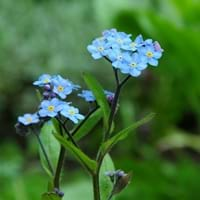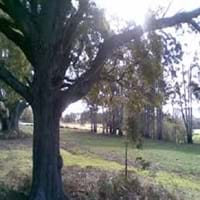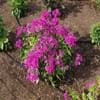Life Span
Annual and Perennial
Annual
Type
Flowering Plants, Shrubs
Tree
Origin
Eastern Asia
Australia
Types
Bigleaf hydrangea, Hortensia, Smooth hydrangea, Oakleaf hydrangea, Annabelle
Not Available
Number of Varieties
Not Available
Habitat
Fields, gardens, meadows, rocky outcrops, waste ground, yards
Fertile bottom land, moist forests, Moist Soils, Moist woods, Roadsides, Sandy areas, tropical environments, Tropical rainforest, Tropical regions, Wet lands
USDA Hardiness Zone
Not Available
8-11
AHS Heat Zone
8 - 1
12-10
Sunset Zone
21,22
8, 9, 13, 14, 15, 16, 17, 18, 19, 20, 21, 22, 23, 24
Habit
Clump-Forming
Upright/Erect
Minimum Height
Not Available
Minimum Width
Not Available
Flower Color
Blue, White
Light Yellow
Flower Color Modifier
Bicolor
Bicolor
Fruit Color
Not Available
Brown
Leaf Color in Spring
Green, Gray Green
Green, Gray Green
Leaf Color in Summer
Green, Gray Green
Green, Gray Green
Leaf Color in Fall
Green, Gray Green
Green, Gray Green
Leaf Color in Winter
Light Green
Green, Gray Green
Leaf Shape
Lanceolate
Long Linear
Plant Season
Spring, Summer
Spring, Summer, Fall, Winter
Sunlight
Full Sun, Partial Sun
Full Sun
Type of Soil
Loam
Loam, Sand
The pH of Soil
Acidic, Neutral
Acidic, Neutral, Alkaline
Soil Drainage
Well drained
Well drained
Bloom Time
Early Spring, Spring, Late Spring, Early Summer, Summer, Late Summer
Spring
Tolerances
Not Available
Drought
Where to Plant?
Ground
Ground
How to Plant?
Divison, Seedlings
Seedlings
Plant Maintenance
Medium
Medium
Watering Requirements
Do Not over Water
Average Water Needs
In Summer
Lots of watering
Lots of watering
In Spring
Moderate
Moderate
In Winter
Average Water
Average Water
Soil pH
Acidic, Neutral
Acidic, Neutral, Alkaline
Soil Type
Loam
Loam, Sand
Soil Drainage Capacity
Well drained
Well drained
Sun Exposure
Full Sun, Partial Sun
Full Sun
Pruning
Remove damaged leaves, Remove dead branches, Remove dead leaves
Remove damaged leaves, Remove dead branches, Remove dead leaves
Fertilizers
All-Purpose Liquid Fertilizer
All-Purpose Liquid Fertilizer
Pests and Diseases
Red blotch
Red blotch
Plant Tolerance
Drought
Drought
Flower Petal Number
Single
Single
Foliage Texture
Medium
Medium
Foliage Sheen
Matte
Matte
Attracts
Bees, Flies
Hummingbirds, Butterflies
Allergy
Chest tightness, Diarrhea, Dizziness, Nausea, Vomiting
Asthma, Eye irritation, Respiratory problems, Skin irritation
Aesthetic Uses
Beautification, Cottage Garden, Ground Cover, Showy Purposes
Not Used For Aesthetic Purpose
Beauty Benefits
Not Available
Not Available
Edible Uses
Yes
Insignificant
Environmental Uses
Air purification
Air purification, Shadow Tree
Medicinal Uses
Fever, Kidney problems, Urinary tract problems
Not Available
Part of Plant Used
Flowers, Root
Bark, Tree trunks
Other Uses
Culinary use, Used as Ornamental plant
Application in Furniture, Constructing Boats, Used in Furniture, Wood is used fore making tools
Used As Indoor Plant
No
No
Used As Outdoor Plant
Yes
Yes
Garden Design
Bedding Plant, Cottage garden, Edible, Hanging Basket, Wildflower
Screening / Wind Break, Shade Trees, Street Trees
Botanical Name
Myosotis arvensis
ACACIA melanoxylon
Common Name
Forget-Me-Not
Australian Blackwood, Blackwood
In Hindi
Forget-Me-Not
काली लकड़ी
In German
Forget-Me-Not
Schwarzes Holz
In French
Forget-Me-Not
Bois noir
In Spanish
Arce japonés
Blackwood
In Greek
Forget-Me-Not
Μαυρο ξυλο
In Portuguese
Forget-Me-Not
Madeira preta
In Polish
Forget-Me-Not
Czarne drewno
In Latin
Forget-Me-Not
Press
Phylum
Magnoliophyta
Magnoliophyta
Class
Magnoliopsida
Magnoliopsida
Family
Boraginaceae
Fabaceae
Clade
Not Available
Angiosperms, Eudicots, Rosids
Tribe
Not Available
Acacieae
Subfamily
Not Available
Not Available
Importance of Field Forget Me Not and Blackwood
Want to have the most appropriate plant for your garden? You might want to know the importance of Field Forget Me Not and Blackwood. Basically, these two plants vary in many aspects. Compare Field Forget Me Not and Blackwood as they differ in many characteristics such as their life, care, benefits, facts, etc. Every gardener must at least have the slightest clue about the plants he wants to plant in his garden. Compare their benefits, which differ in many ways like facts and uses. The medicinal use of Field Forget Me Not is Fever, Kidney problems and Urinary tract problems whereas of Blackwood is Not Available. Field Forget Me Not has beauty benefits as follows: Not Available while Blackwood has beauty benefits as follows: Not Available.
Compare Facts of Field Forget Me Not vs Blackwood
How to choose the best garden plant for your garden depending upon its facts? Here garden plant comparison will help you to solve this query. Compare the facts of Field Forget Me Not vs Blackwood and know which one to choose. As garden plants have benefits and other uses, allergy is also a major drawback of plants for some people. Allergic reactions of Field Forget Me Not are Chest tightness, Diarrhea, Dizziness, Nausea and Vomiting whereas of Blackwood have Asthma, Eye irritation, Respiratory problems and Skin irritation respectively. Having a fruit bearing plant in your garden can be a plus point of your garden. Field Forget Me Not has no showy fruits and Blackwood has no showy fruits. Also Field Forget Me Not is not flowering and Blackwood is not flowering . You can compare Field Forget Me Not and Blackwood facts and facts of other plants too.





